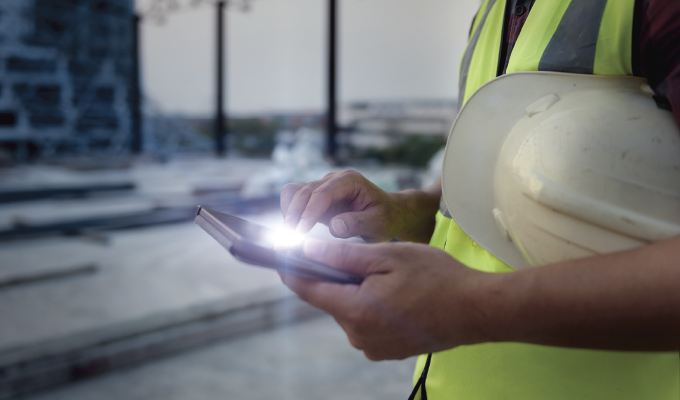Video telematics, IoT devices, and other fleet technology can help increase revenue and advance efficiencies to improve the fleet or general contractor’s bottom line—especially when integrated into a larger technology environment. Telematics provide fleet managers with the real-time data and insights they need to make more strategic decisions, improve efficiencies across the entire fleet, and protect against false claims or potential insurance issues while also boosting safety with impactful driver coaching.
Dean Marris, executive vice president sales, North America, at EROAD, shares in a brief Q&A the benefits of using telematics in the construction industry.
MCS: How does having telematics data give GCs a competitive edge in the construction industry?
MARRIS: General contractors and construction fleets are future-proofing their business when they adopt video telematics and other construction fleet management technology, allowing them to evolve with the industry and stay ahead of the competition. In fact, a recent survey showed that while 86% of construction companies use telematics, only 23% use that data to inform their decision-making, so simply by adopting and properly utilizing this technology, contractors are creating their own competitive edge.
Video telematics have the ability to increase jobsite and driver safety and improve business efficiencies, but many general contractors are not using this technology to the fullest. In fact, if utilized to the fullest extent, video telematics can improve driver coaching to boost safety and protect businesses from false claims with integrated video and fleet data. If construction professionals can stay ahead of the technology curve and adopt this tech into everyday use now, they will have a leg up on their competition when regulations require more tech-based data insights.
MCS: What does EROAD provide for concrete contractors and the projects with cement needs?
MARRIS: EROAD’s CoreHub concrete solution is specifically engineered for construction projects, giving fleet managers the knowledge and communication tools they need to be more efficient and productive. With a connected compact hub and network of wireless sensors, fleet managers and general contractors receive real-time command-center visibility into drivers, assets, materials, equipment location, and uses.
In addition, CoreHub offers absolute precision when it comes to concrete pouring. Fleets can count every rotation, measure moisture levels, and maintain accurate digital records to ensure the best product quality is delivered. This precision can help prevent human error with smart drum sensors for customized alerts at any stage including start, stop, fast mix, regular, and pour. With accurate geo-fencing and easily located truck-in-front on even the most sprawling sites, fleets can also reduce on-site detention times, leading to time and cost savings.
MCS: What sets EROAD apart from other telematics companies in the construction market?
MARRIS: EROAD offers unparalleled end-to-end visibility of every vehicle, every driver and every load—with one cohesive platform, fleet managers and drivers can ensure the job is done on time and on budget. EROAD’s video telematics solution gives construction professionals the ability to protect drivers and their business, avoiding potential legal issues or wrongful claims, while also providing proactive safety coaching to help prevent crashes and encourage safe driving.
Through integration partnerships with companies such as CiDRA and BCMI, EROAD also places emphasis on the power of integrations in fleet technology, especially in the construction industry. On its own, EROAD’s technology allows the driver to easily count every rotation, measure moisture levels, and maintain accurate digital records in order to decrease the margin for human error and increase productivity. But when connected into a larger technology ecosystem, EROAD provides an important piece of the bigger picture that allows construction professionals enhanced visibility into every project’s efficiency and safety.
With EROAD products and solutions, construction professionals and fleet managers can improve overall fleet performance with data-driven insights such as real-time job status updates and driver feedback. In addition, these products can contribute to employee satisfaction and retention by providing an accessible, simplified and unified IoT platform and sensors that frees up drivers’ time and helps them get the job done.
CLOSING THOUGHT
According to Marris, the past few years have brought changes across fleet technology with the introduction and more widespread usage of EVs, increased focus on sustainability, and popularity and adoption of existing technologies such as telematics. The global fleet telematics systems market size is forecast to grow by USD 69.57 billion at a CAGR of 23.18% between 2022 and 2027. In 2023, we expect telematics to remain a priority amongst businesses as the benefits of using telematics—from driver safety to increased revenue—outweigh uncertainty caused by the current economic climate.

For More Information:
Dean Marris is the executive vice president sales, North America, at EROAD. Marris is a co-founder of Coretex, a telematics company acquired by EROAD in 2021. Marris moved to the United States in 2014 from New Zealand, where he was CEO in Australasia for International Telematics. In the U.S., Marris launched the company’s North American Operations for construction materials and built-up direct sales for in-cab and refrigeration. At EROAD, Marris will lead the construction materials and waste and recycling verticals. For more, visit www.eroad.com.
Modern Contractor Solutions, March 2023
Did you enjoy this article?
Subscribe to the FREE Digital Edition of Modern Contractor Solutions magazine.



